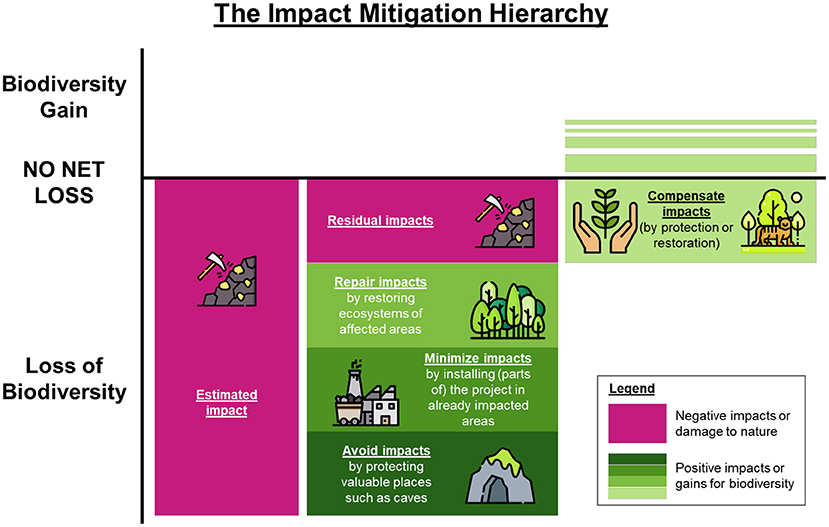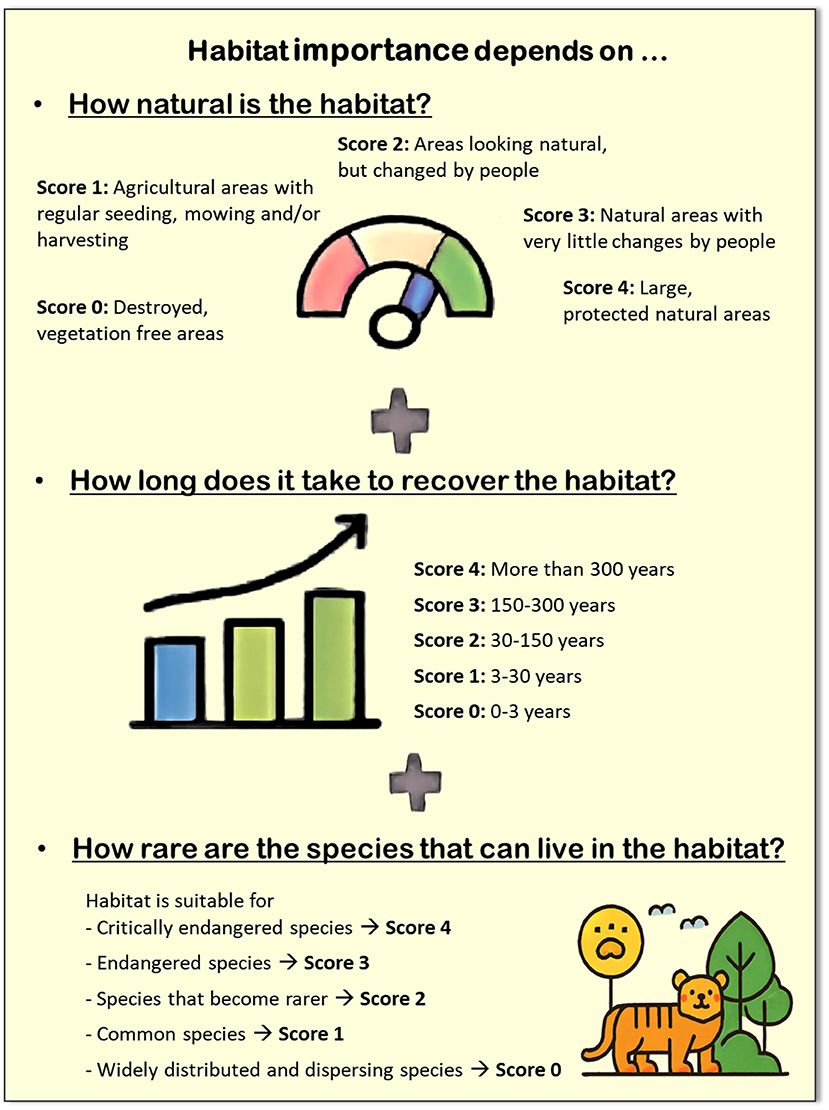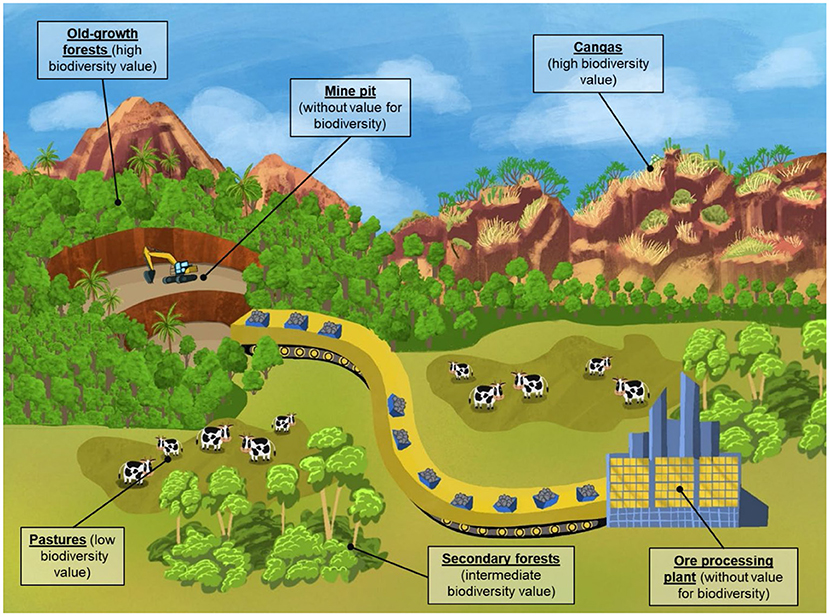Abstract
Have you heard about the environmental impacts of mining? Mining involves obtaining minerals needed for the products we use daily. To reach these minerals, forests are logged, and excavators dig large holes. In this article, we will explain how the mining industry in the Amazon basin can compensate for its impacts and help restore ecosystems and biodiversity in nearby areas. This nature-helping strategy is called the impact mitigation hierarchy. To compensate for places destroyed by mining, much larger areas should be protected and restored by planting trees and allowing nature to grow back. We found that a mining company in the eastern Amazon, Brazil, generated habitats for plants and animals outside the mining area. By doing so, the company compensated for the environmental impacts caused by their mining activities. Keep reading to learn more about how impacts can be compensated for, to produce products we need without harming nature too much!
Balancing Nature and Human Activities
Earth is facing some pretty big challenges. The ways we use land, the traffic we create, and the industries we run are causing serious problems for our planet and all its living things [1]. One of these challenges is related to biodiversity. Biodiversity is the variety of life on Earth—different genes, species, ecosystems, and how they all interact. Biodiversity is important because it provides food, energy, medicines, and materials and helps control the climate, purify water, and keep natural cycles in check. These incredible things that nature provides us with are called ecosystem services.
However, the ways humans are messing with nature can harm many plants and animals and put the ecosystem services we depend on—like clean air and water—at risk. To keep our planet healthy, we need to take quick action. We must find a way to carry out our activities, such as business and industry, without harming nature further [2]. Sometimes, we really need resources—like minerals—to make the devices and products we use every day. If we cannot recycle those materials from other sources, we might have to mine them. When that happens, we should do something good for nature in another place to make up for it. This kind of balance helps reduce or fix the damage we cause, so we can still enjoy the benefits of modern life.
Four simple rules can help us take care of nature while still building and producing the things we need (Figure 1) [3]:
Avoid: when planning a road or a mine, for example, we may detect some super-special places with unique plants and animals. We should not destroy such places—instead, we should search for alternatives.
Minimize: we should do our best to have the smallest possible impact on nature when we build things. For example, if we need to build a road, we can also build tunnels or bridges that allow animals to cross safely without being hurt by cars.
Repair: some of our activities, like mining, harm nature for only a short time. If we cut down trees to obtain minerals from the ground, we should help nature grow back when we are done. This means planting trees, bringing back plants and animals, and making the land healthy again. Such restoration is a way of giving nature a helping hand to heal. Forest restoration leads to the formation of secondary forests, which grow back after deforestation.
Compensate: there are some impacts we just cannot avoid, minimize, or repair. Those are called residual impacts. To make up for the residual impacts of our activities, we should do something good for nature somewhere nearby.

- Figure 1 - The impact mitigation hierarchy shows how we protect nature while doing things like mining.
- After estimating the overall impact, we first avoid harming special places with unique animals and plants, then minimize damage by harming nature as little as possible, and repair what we can. For damage we cannot avoid, minimize, or repair, we compensate damage by doing something good for nature somewhere else. If we compensate more than we impact, we can actually boost biodiversity and ecosystem services! (Icons from Flaticon.com).
Together, these four rules are called the impact mitigation hierarchy [3]. This hierarchy acts as a guide to help us balance improving our lives with keeping our planet healthy.
What Does This Look Like in Real Life?
To test this concept, let us look at a large iron mining project occurring in the Amazon rainforest in Brazil, which is called the S11D Elizier Batista iron mining complex. Iron mining in this region is especially important, as it helps create new jobs and brings in money through taxes. We wanted to see if the mine managers followed the impact mitigation hierarchy to ensure that they were not hurting nature too much.
To avoid impacts, the mine maintains a safe space around areas that are highly important for rare and endangered species, such as caves, lakes, and wetlands. To minimize losses, ore processing is set up in places that are already being used for farming. Although this requires a 9 km-long conveyor belt to move the ore from the mine to the processing plant, this minimizes impacts because fewer trees and natural areas need to be cut down! To repair damage, after mining is finished the company plans to restore the land by planting trees in the affected area. Finally, the company is also making efforts to compensate for the damage it is causing. Although mine pits are restored after exploitation, there are still some residual impacts that cannot be repaired, even with careful planning. So, mining companies are involved in large forest restoration projects, planting millions of native trees near mines trying to restore the area’s original biodiversity [4].
Sounds pretty awesome, right? However, we wondered whether these factors were enough to make up for all the impacts on biodiversity caused by the S11D mining project. To answer this question, we developed a method to measure the impacts on biodiversity.
The Biodiversity Value
Typically, a landscape is composed of several habitat types, such as forests, meadows, fields, rivers, or lakes. Some places have many special plants and animals, while others have fewer. How can we measure how important each habitat is for nature? One approach is to check how many species the habitats contain [5], but this does not consider that habitats with many rare species, or those that are more difficult to restore, should receive higher scores than others.
This is why we created a measure called the biodiversity value. It works in two steps. First, we ask how important the habitat is. We check if it is natural, if it has rare species, and how long it takes to recover (Figure 2). VIP areas such as old-growth forests receive more points because they are rarer, more natural, or need more time to recover than other places, such as pastures or mine lands. Second, we ask about the actual conditions of the habitat, or how healthy it is. We look for species, ecosystem services, and healthy soil. We found that a secondary forest, for example, has ~70% of the biodiversity, carbon, and soil health of an old-growth forest. Therefore, we say that its condition is 0.7.

- Figure 2 - We can calculate habitat importance based on three criteria: naturalness, recovery time, and rarity.
- After each habitat is evaluated, the scores are summed and divided by twelve (the maximal score a habitat can achieve) so that the importance varies between 0 and 1. Secondary forests, for example, are considered near-natural habitats (Score 3), need 3–30 years to recover (Score 1), and may harbor endangered species such as Brazilian Nut and others (Score 3), summing up to an overall score of 7 and an importance value of 0.583.
We multiply the importance number by the condition number to obtain the biodiversity value. For example, secondary forests are somewhat natural and have some rare species but not as many as old forests (seven out of 12 possible points, Figure 2). Since they recover faster and have only about 60% of the species and services of a natural forest, their biodiversity value is ~40%. This means that we need 2.5 times more secondary forest to compensate for the loss of an untouched ecosystem. Mining areas have no biodiversity, so their biodiversity value is 0.
The Biodiversity Balance of the S11D Mining Complex
To understand how the S11D iron mining complex affected nature, we investigated how habitats changed during the mining project (Figure 3). We used a tool called MapBiomas, which is like a giant map showing how the surface of Brazil changes from year to year (you can have a look at it here, but the English version is not complete). Specifically, we checked how the habitats changed from the beginning of the planning phase in 2008 until 2021 (the last year with MapBiomas mapping available when we started this project).

- Figure 3 - Ecosystems from the neighborhood of the S11D mine.
- Species-rich, natural ecosystems such as old-growth forests and cangas (rocky grasslands and shrubs that grow on iron-rich hilltops) have high biodiversity value. Secondary forests are planted to compensate for mining impacts and have lower biodiversity, as they have fewer and smaller trees than old-growth forests do. Pastures used for raising cattle have a low biodiversity value, and mining areas without plants and animals have no biodiversity value.
When the S11D Eliezer Batista iron mining complex was built, the company put a giant hole in the ground for mining and a super long conveyor belt to carry the ore to the processing plant, where iron is separated from other valuable substances. To do so, they cut down nearly 1,200 times the area of a soccer field.
However, the processing plant was built on already deforested farmlands to lessen the impact on nature. Additionally, the company did other things to balance their impacts. They bought more farmland than they needed for the processing plant and planted seedlings, so that nature could grow back in an area of 3,400 soccer fields. In these areas, nature was clearly the winner! As the planted area is nearly three times greater than the area of highly valuable natural ecosystems that was impacted (old-growth forests and cangas), the overall biodiversity of the area increased during the project! This tells us that mining impacts in tropical landscapes can be mitigated!
Although we expect further biodiversity gains as secondary forests become older and when mine pits are restored after extraction of all iron, there are some further challenges. Currently, there is no way to restore canga ecosystems. Further plans are needed to protect these ecosystem and their special plants and animals. Importantly, impact on animals was not (yet) examined in this study. While we observed positive changes in plants, a careful examination of animal diversity is necessary to understand the full impact of the mining project. For example, jaguars, the top predators of the region, have already been seen in the area, which is a good sign for wildlife, but we need to look closer to ensure that all the different kinds of animals are preserved in the new areas.
Getting Mines to Cooperate With Nature
We discovered that using the impact mitigation hierarchy compensates for the impact of mining on nature, although we still need to know more about the return of animals to secondary forests. By using the mitigation hierarchy some impacts are avoided, others are minimized or repaired, and residual impacts are compensated, in our study area by planting trees in areas that are nearly three times larger than the mine itself. Our results therefore show that a responsible mining industry can combine economic development and nature conservation. Although secondary forests can make up for mining impacts, they have lower biodiversity values than the original ecosystems. Therefore, we should reduce opening new mines and a simple way to do this is to recycle things we already use, like soda cans, old electronics, and even cars. Recycling helps us avoid extracting more resources from the Earth, thereby protecting the environment we all cherish and rely on.
Glossary
Biodiversity: ↑ The variety of all living things—like animals, plants, fungi, and microbes—that live in ecosystems and help keep nature balanced, healthy, and full of life.
Ecosystem Services: ↑ The benefits nature gives us, such as clean air and water, food, medicine, and even fun places to explore—all thanks to healthy ecosystems working well.
Restoration: ↑ Helping damaged land recover and return to a healthy, natural state where plants and animals can live and thrive again.
Secondary Forests: ↑ Younger forests that grow naturally after the original trees are cut down or damaged. They are still developing and changing.
Residual Impact: ↑ The damage to nature that remains even after we try to avoid, reduce, or fix the harm caused by activities like building roads or mining.
Impact Mitigation Hierarchy: ↑ A step-by-step way to reduce harm to nature: first avoid damage, then reduce it, fix what we can, and finally make up for what’s left.
Biodiversity Value: ↑ The importance of nature’s variety—for our health, survival, culture, and future—including rare species, wild places, and the jobs ecosystems do for us.
Old-growth Forests: ↑ Untouched forests with large ancient trees, many plants and animals, and a balanced, natural environment.
Conflict of Interest
The authors declare that the research was conducted in the absence of any commercial or financial relationships that could be construed as a potential conflict of interest.
Acknowledgments
Authors are grateful to valuable comments and suggestions from three Young Reviewers, Science Mentors and the Editor. Authors PS and TR received grants from ITV’s No Net Loss project (R100603.NNL), and authors SR, CFC, and MG received CNPq productivity scholarships (grant numbers 311637/2022-1, 304560/2023-5, and 310865/2022-0).
Original Source Article
↑Gastauer, M., Pinheiro, T., Caldeira, C. F., Ramos, S. J., Coelho, R. R., Fonseca, D. S., et al. 2024. Large-scale forest restoration generates comprehensive biodiversity gains in an Amazonian mining site. J. Clean. Prod. 443:140959. doi: 10.1016/j.jclepro.2024.140959
References
[1] ↑ Rockström, J., Gupta, J., Qin, D., Lade, S. J., Abrams, J. F., Andersen, L. S., et al. 2023. Safe and just earth system boundaries. Nature 619:102–11. doi: 10.1038/s41586-023-06083-8
[2] ↑ Milner-Gulland, E J., Addison, P., Arlidge, W. N. S., Baker, J., Booth, H., Brooks, T., et al. 2021. Four steps for the Earth: mainstreaming the post-2020 global biodiversity framework. One Earth 4:75–87. doi: 10.1016/j.oneear.2020.12.011
[3] ↑ Zu Ermgassen, S. O. S. E., Maron, M., Corlet Walker, C. M., Gordon, A., Simmonds, J. S., Strange, N., et al. 2020. The hidden biodiversity risks of increasing flexibility in biodiversity offset trades. Biol. Conserv. 252:108861. doi: 10.1016/j.biocon.2020.108861
[4] ↑ Gastauer, M., Pinheiro, T., Caldeira, C. F., Ramos, S. J., Coelho, R. R., Fonseca, D. S., et al. 2024. Large-scale forest restoration generates comprehensive biodiversity gains in an Amazonian mining site. J. Clean. Prod. 443:140959. doi: 10.1016/j.jclepro.2024.140959
[5] ↑ Schipper, A. M., Hilbers, J. P., Meijer, J. R., Antão, L. H., Benítez-López, A., de Jonge, M. M. J., et al. 2020. Projecting terrestrial biodiversity intactness with GLOBIO 4. Glob. Change Biol. 26:760–71. doi: 10.1111/gcb.14848
